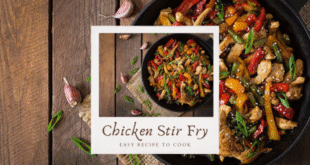There’s something truly magical about the aroma of pulled pork slowly smoking over wood, promising a tender, flavorful reward. Today, we’re diving deep into the art of smoking pulled pork using a pellet grill – a fantastic way to achieve consistent temperature and incredible smoky flavor with minimal fuss. Get ready to master this classic barbecue staple!
This article contains Amazon affiliate links to mentioned products that result in a small commission to support this website and comes at no extra cost to you.
Choosing Your Weapon (and Fuel): Pellet Grill Smokers and Pellet Types
The beauty of a pellet grill is its ease of use and consistent heat. Several excellent brands dominate the market, each with its own strengths. Here are a few popular options you might consider:
- Traeger: Often considered the pioneer of pellet grills, Traeger offers a wide range of models with various features and price points. Look for models with digital controllers for precise temperature management.
- Pit Boss: Known for offering great value, Pit Boss pellet grills often come with larger cooking areas and impressive features for their price.
- Camp Chef: Camp Chef grills often feature a slide-and-grill technology for direct flame searing, adding versatility to your smoking experience.
- Weber SmokeFire: Weber’s entry into the pellet grill market boasts smart features and precise temperature control, staying true to their reputation for quality.
Be sure to check out my article, Beginner Smoker/Grilling Guide to learn how to use a smoker grill.

No matter which pellet grill you choose, the fuel source – the pellets themselves – plays a crucial role in the final flavor. Here are some popular pellet types for smoking pulled pork:
- Hickory: A classic choice for pork, hickory pellets impart a strong, smoky, bacon-like flavor.
- Apple: For a milder, sweeter smoke, applewood pellets are an excellent option, adding a subtle fruity note that complements pork beautifully.
- Cherry: Similar to apple, cherry wood offers a slightly sweeter and fruitier smoke that enhances the pork’s natural flavors. It also contributes to a beautiful mahogany color.
- Oak: A medium-bodied smoke that’s versatile and works well with many meats, including pork. It provides a balanced smoky flavor.
- Pecan: Offering a nutty and slightly sweet smoke, pecan pellets are a fantastic choice for a unique flavor profile.
- Competition Blend: (My personal favorite) Many brands offer a blend of woods like hickory, maple, and cherry, designed to provide a balanced and appealing smoky flavor that’s crowd-pleasing.

Experimenting with different pellet types is part of the fun! Try blending different woods to create your signature smoke profile.
The Foundation of Flavor: Selecting and Prepping Your Pork Butt
The star of the show is the pork butt, also known as a Boston butt. Despite its name, it actually comes from the upper shoulder of the pig. Look for a well-marbled piece of meat with a good amount of fat throughout. This fat will render during the long smoking process, keeping the pork moist and adding incredible flavor. You can often find pork butts ranging from 6 to 10 pounds.
Meat Preparation:
- Trimming (Optional): Some people prefer to trim some of the excess hard fat cap on the pork butt. While some fat is essential for moisture, overly thick areas might not render completely. Use a sharp knife to trim down any exceptionally thick sections, but don’t remove it all!
- The Binder (Optional, but Recommended): A binder helps the rub adhere to the meat. Common options include:
- Yellow Mustard: Don’t worry, you won’t taste the mustard in the final product! It provides a slightly tangy base for the rub.
- Worcestershire Sauce: Adds a savory depth of flavor.
- Olive Oil: A neutral option that helps the rub stick.
- Simply water or even the natural moisture of the meat can work in a pinch.
- Applying the Rub: Now for the flavor bomb! A good rub is crucial for delicious pulled pork. You can buy pre-made rubs like my favorite by Meat Church BBQ or create your own. Here’s a basic but fantastic recipe for a homemade pork rub:
- 1/4 cup coarse kosher salt1/4 cup black pepper (freshly ground is best!)1/4 cup paprika (sweet or smoked, or a blend)2 tablespoons granulated garlic2 tablespoons onion powder1 tablespoon chili powder1 tablespoon brown sugar (optional, for a touch of sweetness)1 teaspoon cayenne pepper (optional, for a little heat)
- Resting: Once rubbed, wrap the pork butt tightly in plastic wrap and refrigerate for at least 30 minutes, or ideally for several hours or even overnight. This allows the salt to penetrate the meat and the flavors of the rub to meld.



Low and Slow: The Smoking Process
Now for the main event! Preheat your pellet grill to a low and consistent temperature, typically between 225°F and 250°F (107°C and 121°C). This low-and-slow approach is key to breaking down the tough connective tissues in the pork butt, resulting in that melt-in-your-mouth tenderness.
- Placement: Place the seasoned pork butt directly on the grill grates. If your grill has different heat zones, try to place it in a more indirect heat area.
- The Stall: Be prepared for “the stall.” This is a period during cooking (usually when the internal temperature reaches around 150-170°F / 65-77°C) where the temperature of the meat seems to plateau and can even drop slightly. This is due to evaporative cooling as moisture releases from the meat. Don’t panic! It’s a natural part of the process.
- Pushing Through the Stall: There are a couple of ways to handle the stall:
- Patience: Simply wait it out. The temperature will eventually start to rise again. This can take several hours.
- The Texas Crutch: This involves wrapping the pork butt tightly in butcher paper (preferred for maintaining bark) or aluminum foil once it reaches the stall temperature. Adding a splash of liquid like apple juice, broth, or even beer before wrapping can help keep it moist. Wrapping helps the meat cook through the stall more quickly.
- Monitoring Temperature: Use a reliable meat thermometer to track the internal temperature of the pork butt. The target internal temperature for pulled pork is 200-205°F (93-96°C). The meat should be probe-tender, meaning a probe or fork should slide into it with little to no resistance.
- Cooking Time: The total cooking time will vary depending on the size of your pork butt and the temperature of your smoker. Expect it to take anywhere from 8 to 14 hours, about 1.5 hours per pound. Don’t rush the process; low and slow is the name of the game.
The Crucial Rest: Patience is a Virtue
Once the pork butt reaches the target temperature and is probe-tender, resist the urge to shred it immediately! Resting is absolutely crucial for juicy and flavorful pulled pork.
- Wrapping: Wrap the cooked pork butt tightly in butcher paper or foil (if you unwrapped it).
- Resting Location: Place the wrapped pork butt in a cooler or insulated Cambro container. You can even wrap it in old towels for extra insulation.
- Rest Time: Allow the pork butt to rest for at least 1-2 hours, but even longer (up to 4 hours) is beneficial. During this time, the internal temperature will equalize, and the juices will redistribute throughout the meat, resulting in incredibly moist and tender pulled pork.

The Grand Finale: Shredding and Serving Pulled Pork
Now for the most satisfying part – shredding that beautifully smoked pork!
- Unwrapping: Carefully unwrap the rested pork butt, being mindful of any accumulated juices (don’t discard these!).
- Shredding: Use two forks or a pair of meat claws to shred the pork. Pull it apart into individual strands, discarding any large pieces of remaining fat or connective tissue.
- Adding Juices (Optional): If you collected juices during the rest, you can drizzle some of them back over the shredded pork to add extra moisture and flavor.
- Serving Suggestions: The possibilities for enjoying your smoked pulled pork are endless! Here are a few ideas:
- Classic Pulled Pork Sandwiches: Pile the pulled pork high on toasted buns with your favorite barbecue sauce, coleslaw, and maybe some pickles.
- Pulled Pork Tacos or Burritos: Load up tortillas with pulled pork, salsa, avocado, cheese, and your favorite toppings.
- Pulled Pork Nachos: Spread tortilla chips on a platter, top with pulled pork, cheese, jalapenos, onions, and a drizzle of barbecue sauce and sour cream.
- Pulled Pork Pizza Topping: Add a smoky twist to your homemade pizza.
- Pulled Pork Loaded Fries or Baked Potatoes: A hearty and delicious comfort food.
- Pulled Pork Bowls: Combine pulled pork with rice, beans, corn, and your favorite bowl toppings.
- Serve with BBQ Cowboy Beans: These beans are unbelievably delicious! I spent a year crafting this recipe and now my family and friends beg me to make it every time I throw a BBQ.

#PulledPork #SmokedPork #PelletGrill #BBQ #Barbecue #PorkButt #LowAndSlow #Foodie #HomeCooking #MeatLover #BBQLife #Smoker #Recipe #FoodBlog #Delicious #EasyRecipe #WeekendCooking
 My Deal Digger I help You Dig Up The Best Deals & Give Reviews On Great Products
My Deal Digger I help You Dig Up The Best Deals & Give Reviews On Great Products






One comment
Pingback: BBQ Cowboy Beans: Smoked To Perfection - My Deal Digger